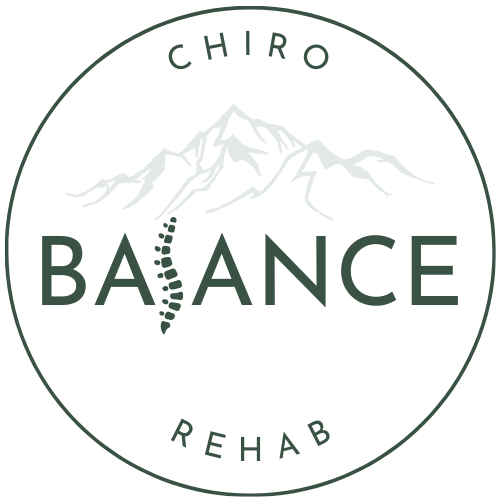Torticollis & Flat Spots
What muscles are involved in torticollis?
Typical answer? Sternocleidomastoid (SCM). Complete answer? Commonly, the entire body is involved with torticollis or preferences to one side. When we have tension that limits our ability to look to either side, we develop tension and strength asymmetrically (more on one side than the other) throughout the entire body.
Why is torticollis a concern?
Torticollis can impact development in many ways. If we are consistently only getting input to one side (think visual stimulation, movement of one side of the body more frequently, etc.) we can have changes in how motor development progresses and milestones are met. The cranium (skull) is still malleable in tiny tots and increased pressure on one area of the skull can lead to a flat spot (see below for more info) and changes in the entire head and face. Tension can also lead to overall discomfort and can also increase the potential for difficulty with latching and sucking.
What does torticollis look like?
A baby with torticollis will most commonly have a head tilt to one side and their head will turn to the other side. However, littles CAN present with a head tilt and rotation to the same side.
What causes torticollis?
The most common cause of torticollis is likely due to the baby’s position in utero. It is more common in:
first borns
multiples
those with a history of birth trauma
Babies over 21 inches at birth (little nugget is all squished up)
Littles with reflux
Tiny tots with hip dysplasia
Babies with Tethered Oral Tissues (TOTS- aka tongue tie)
When is it common to notice torticollis?
Torticollis can be present at birth, but many parents don’t notice it until 4-8 week mark. Whether it’s a belly or vaginal birth, birth is a natural and spectacular process, but it’s also a spectacular journey for a baby. Even if there is a congenital torticollis (present at birth), it takes a period of time to recover and heal from the muscle trauma associated with coming into this world. All of that to say, torticollis is already typically present at birth, it’s just not noticeable. It is NOT due to a parent doing something wrong, it simply just takes time to become noticeable.
Should I be worried about my baby’s flat spot?
Many parents are concerned with flat spots due to aesthetic changes that commonly accompany them such as one eye appearing smaller than the other, asymmetries of the face, ear positioning, ability to wear a hat/ helmet later in life, etc. However, there can be functional and developmental concerns that may accompany a flat spot if it is impacting your baby’s ability to rotate their head and process the world through both sides of their body.
What causes a flat spot / flat head?
Simply put, flat spots are caused by pressure. If a newborn is laying on their back (as they should be for safe sleep) without much rotation from side to side, they may develop a flat spot along the back of the head. If a baby has torticollis and has consistent pressure along one side of the head, this can cause a flat spot on one side.
What are the types of head shape concerns?
Plagiocephaly
Flat spot on the back of one side of the head.
Brachycephaly
Flat spot through the back of the
head / skull
Scaphocephaly
Long and narrow head shape
Will my baby grow out of their flat spot?
The short answer is yes and no. There can be some natural correction as the skull grows, but this should NOT take the place of evaluating and treating a flat spot as soon as possible. The optimal time for treating a flat spot conservatively (without the use of a helmet) is within the first 4 months. Due to the way this is corrected, once your baby starts rolling, it becomes more difficult to treat.
How can a chiropractor help with torticollis and flat head in babies?
Dr. Dani is a pediatric chiropractor with additional training in torticollis and head shape concerns. Treatment involves:
a thorough exam, assessing the ENTIRE BODY
checking for other potential and frequently correlated concerns such as oral dysfunction (ex. tongue tie) and/or reflux
treating body asymmetries and movement patterns through gentle bodywork and providing at-home exercises (stretching AND strengthening) and positioning recommendations
Dr. Dani also frequently coordinates care with a network of other providers to help manage care and ensure the best results.
When is it too late to treat a flat spot?
It is easiest to treat a flat spot with conservative care (bodywork, exercises and positioning correction) prior to baby learning to roll. Typically, this is before 4-5 months. However, if a helmet is needed or there is a concern about
torticollis / side-to-side preferences, it is still important to seek out a prenatal chiropractor to help reduce the body tension that typically accompanies this concern. It is ALWAYS helpful to address the entire body and not just the shape of the head.
Are torticollis and plagiocephaly common?
One study found that 73% of newborns have one or more asymmetry: torticollis (16%), facial asymmetry at (42%) and asymmetry of the head at (61%). The majority of research agrees that over half of babies will have some degree of head shape asymmetry.




